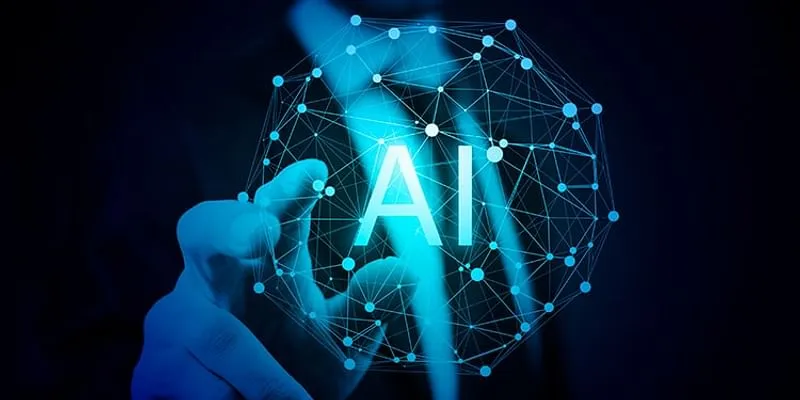Why AI, ML in digital lending is a boon for unserved SMEs, micro-entrepreneurs
Powered by emerging technologies such as AI, ML and Big Data, fintechs are bringing about a transitional shift in micro-lending and constructing a robust digital lending ecosystem to bridge the credit gap for micro-entrepreneurs.
Touted as the ‘engines of growth’ of India, MSMEs (micro, small and medium enterprises) are an important contributor to job creation as well as the economic development of the country. They contribute around 30 percent to India’s GDP and constitute nearly 40 percent of the country’s total exports.
As per the MSME Ministry data, at present, India has approximately 6.3 crore MSMEs, increasing by a CAGR (Compound Annual Growth Rate) of 18.5 percent from 2019 to 2020. Given that more than half of them are located in rural India, most of them are unserved or underserved when it comes to extending credit lines, owing to a lack of formal creditors at the last mile. However, all this is set to change.
Over the past few years, with smartphones and the internet becoming more accessible than ever before, many digital lending platforms have mushroomed in India. Microfinance has emerged as a fast-growing sector. Various studies indicate that the microfinance sector in India has the potential to grow at a CAGR of 40 percent by 2025. This motivated the government to encourage digitisation in banking, which led to fintechs rushing to fill the gaps–particularly in the digital lending category.

India, today, is not just one of the fastest-growing economies but, undoubtedly, is also one of the world’s largest fintech centres. As per the latest report of BLinC Investment Management, the overall market size of the fintech industry has grown to a figure of $31 billion. It is estimated that India has more than 6,000 fintech, of which 16 percent are involved in lending.
To ensure systemic stability and protection of SMBs against exploitation, there is a growing need to smoothen the credit process. Owing to the nature and size of their businesses, small retailers often need timely and small-ticket working capital loans for short tenures to keep their businesses afloat. However, traditional lending institutions shy away from this segment. Hence, a major chunk of these retailers turns to informal lending sources. Lack of collateral, a reliable credit score, or being new to credit (NTC) often render them vulnerable to the loan sharks–the so-called sahukars–instead of conventional lenders such as banks or NBFCs (Non-banking Financial Companies). Availing loans at exorbitantly high-interest rates pushes them further into the vicious loop.
Here, fintechs have emerged as the game-changers of the country’s micro-credit scenario. Powered by emerging technologies such as AI, ML and Big Data, fintechs are bringing about a transitional shift in micro-lending. Built on the premise of a data-driven digital footprint, new-age fintech models are constructing a robust digital lending ecosystem to bridge the credit gap for micro-entrepreneurs. User-generated data is being compiled in a multitude of settings–bank accounts, shopping habits, GST returns or statements, lifestyle factors such as cab usage, movie viewing, applications we use for day-to-day purposes, and so on.
When a micro-entrepreneur, for example, sells or buys anything digitally, the footprint of that transaction is recorded. Invoice data for digital purchases are instantly uploaded to the GST portal for tax filing. As an increasing number of consumers and small businesses transact digitally, their digital footprints expand offering voluminous data to derive patterns and extract actionable insights. With the assistance of AI, complex and unstructured data is being modelled innovatively to create efficient workflows and drive decision making.
AI can effectively address sectoral challenges to aid efficient lending by offering a quicker and improved onboarding process, better credit underwriting at reduced costs, faster decision-making, improved risk management techniques, fraud detection, enhanced security and compliance, credit monitoring, debt recovery, and so on. For example, the bank statement analysis is based on AI/ML, assessing operational data (i.e. debit and credit transactions, transfers, and end-of-day balances) from a consumer's bank statement and translating it into intelligent data that can be tailored for each lender.
Automating the entire loan disbursement process, including review of documents, credit bureau checks etc has helped achieve significant cost optimisation, besides ironing out biases in the application process. Additionally, integration with partners to avail real-time KYC and authentication of customer profiles, as per government data, has substantially improved the turnaround time, making it smooth and increasingly accurate. Computing the creditworthiness of the applicants based on their digital footprint helps companies, not just source loan applications digitally but also to offer the right loan amounts to them.
Digitisation and automation, followed by collaborative efforts between credit bureaus and various fintechs, are becoming the new norm to extend credit to the larger unserved and under-served sections of society.
Powered by technology and driven by data, digital lending is now being reimagined through collaborative models that are highly scalable as well accessible to the bottom of the pyramid. Of course, all of this valuable data should be leveraged with absolute prudence and with the users’ consent such that their privacy is not jeopardised. Fintechs are working toward reshaping the microfinance ecosystem where both urban and rural MSMEs have seamless access to credit alike, and India becomes an inclusive nation.
Edited by Kanishk Singh
(Disclaimer: The views and opinions expressed in this article are those of the author and do not necessarily reflect the views of YourStory.)









